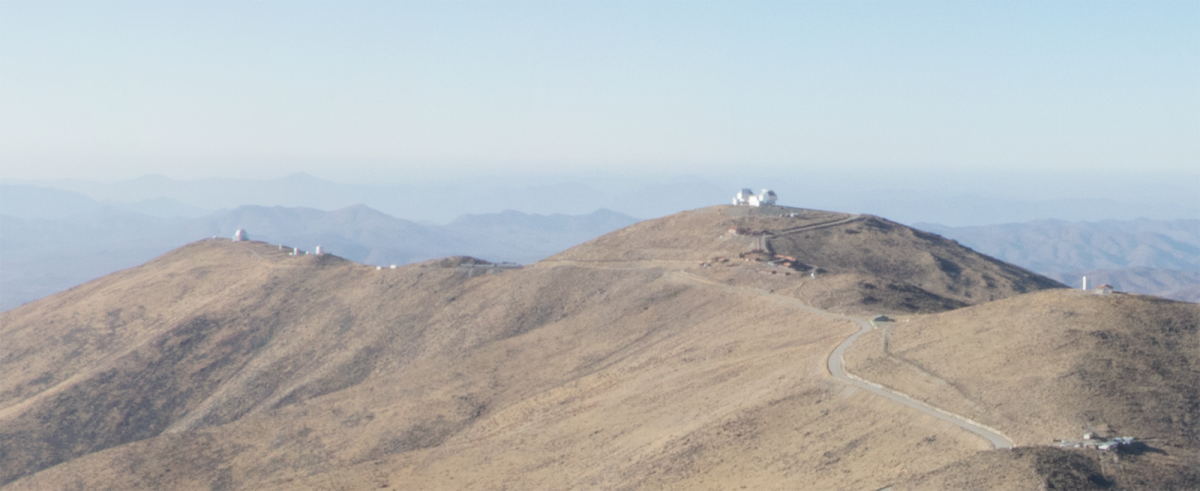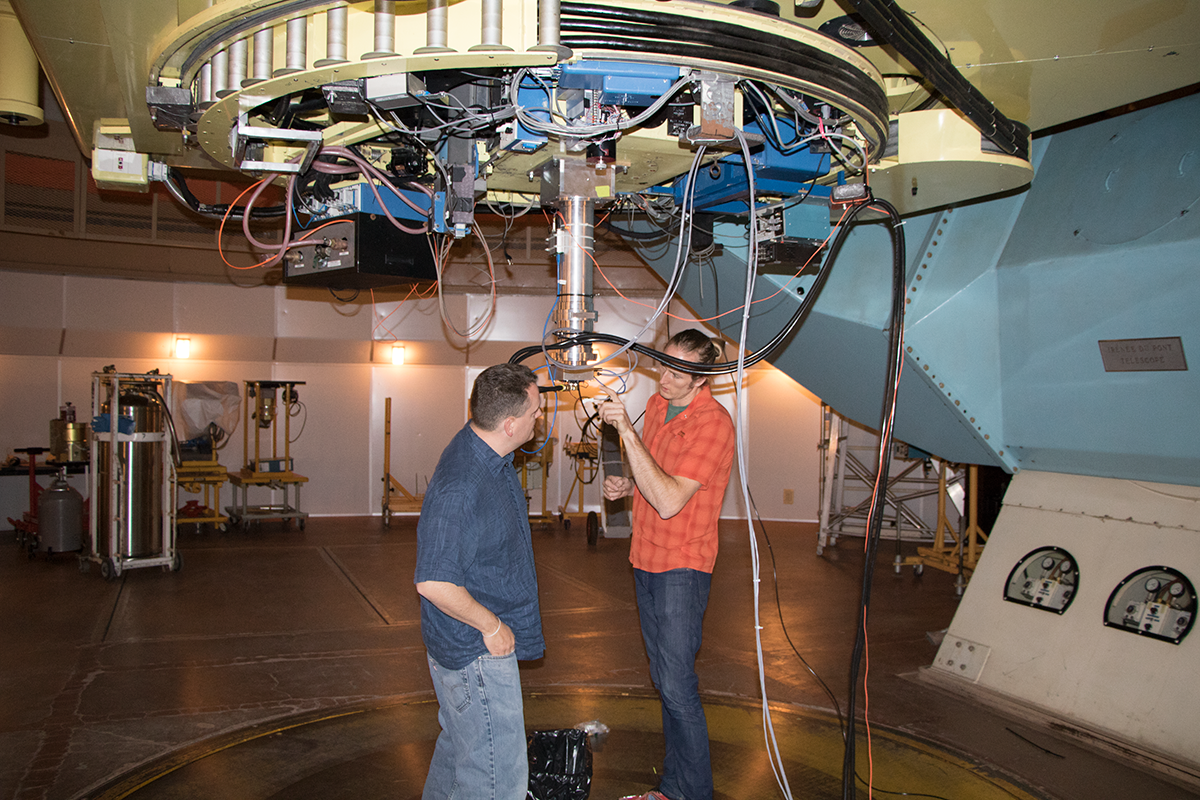By Drew Malonis
 Las Campanas Observatory, viewed from the contruction site of the Giant Magellan Telescope
Las Campanas Observatory, viewed from the contruction site of the Giant Magellan Telescope
Last November, Rob, Tim, and I had the singular opportunity to visit Las Campanas Observatory in the foothills of the Chilean Andes. The main goal of this trip was to test out the InGaAs Fly’s Eye camera prototype on a real telescope, but we also took the opportunity to look at the proposed site for LLAMAS, and to see how FIRE was doing these days. Travel to Chile is pretty much old hat for Rob at this point, but it was the first time the Tim and I had been down there, so we tried to soak in as much as of the experience as possible. Since I had recently purchased a new camera, I was charged with helping to document our trip to the home of some of the best telescopes in the world.
Getting from Boston to LCO takes roughly 24 hours door-to-door. Our air route was Boston to Miami, Miami to Santiago, and then Santiago to La Serena, a smaller coastal city about 450 km to the north. In La Serena, the Carnegie Institute has a small base of operations, nicknamed “El Pino,” after the large pine tree that dominates the courtyard. (Regrettably, I did not get a good picture of the tree.) El Pino handles a lot of the administration of LCO and serves as a departure point for shuttle vans running up the mountain. Because visitors to Las Campanas are frequently flying in from all over the world or coming down from the mountain after a long night observing, El Pino also has a kitchen and a few guest rooms where globe-trotting astronomers can rest for a few hours before heading off on the next leg of their journey. At the very least, it was a nice place to kill a few hours, especially after spending the night on a plane.
 The view from El Pino, across the bay towards Coquimbo
The view from El Pino, across the bay towards Coquimbo
From La Serena, it’s a three hour ride by van up to the observatory. Our ride up was mostly uneventful, and we all went to bed not long after getting there. The next morning, we were greeted with some very unwelcome news: Our camera was held up in customs. We’d shipped our camera through the Carnegie Institute almost a month before, and we were aware of the ongoing customs strike, but our contacts at LCO had been hopeful that everything would be released and our equipment would be waiting for us. It was not. Still we weren’t scheduled to actually use the telescope until the next night, so Tim and I decided to go on a short hike around observatory.
The Las Campanas Observatory sits 7800 feet above the Atacama Desert, so even though we looped a few miles around, we never really left the side of the mountain we were on. The countryside around LCO is breathtaking, but also very uniform in color, and fairly rugged; almost all of the vegetation is hardy brownish scrub, with green only visible in one or two spots in the valleys where surface water has collected. We did encounter one of the guanacos that apparently have free reign over the surrounding observatory grounds.
 There were a number of copper seams in the area
There were a number of copper seams in the area
When we returned to the lodge, we got some good news: The observatory staff had somehow gotten our camera through customs. We were able to unbox and test it, and then attach it to the 2.5 meter Ireneè du Pont telescope the next morning. Hooking up the camera (and playing with the software) took most of the day.
 Unpacking and testing the Fly's Eye Camera prototype
Unpacking and testing the Fly's Eye Camera prototype
 Rob and Tim inspect the installed camera
Rob and Tim inspect the installed camera
That night, we were able to start observing. There were, of course the usual bumps associated with bringing a new instrument online, but over the next several days, we were able to do some photometry measurements, look at a couple of interesting galaxies, observe a quasar, and even see an exoplanet transient! We also ate way too many sugary snacks, and found a new friend in the du Pont telescope kitchen.
 It's very important to watch where you step
It's very important to watch where you step
When you’re tweaking hardware frantically during the day and then observing all night, the time does tend to pass quickly. Still, we did have some time here and there to soak in the surroundings. The Las Campanas is very quiet, and the simple act of sitting outside can be meditative in and of itself. Sunsets are spectacular, and Las Campanas is a great place to observe the rare “green flash” phenomenon at the end of the day. The night sky, of course, is transcendent. (There’s a good reason that telescopes are built there.) The good seeing conditions and lack of light pollution mean that the Milky Way, Magellanic Clouds, and several nebulae are all visible with the naked eye, (although my astrophotography skills are still ramping up to the level where I can do them justice. Next time, though...)
 The wild burros are significantly less skittish than the guanacos
The wild burros are significantly less skittish than the guanacos
 Waiting for the sun to set on the exterior catwalk of the du Pont telescope
Waiting for the sun to set on the exterior catwalk of the du Pont telescope




